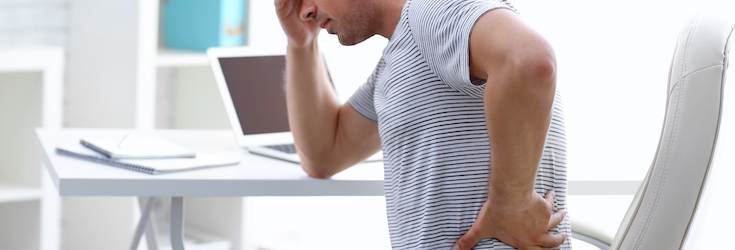What is Ergonomics and Could it Make You a Happier Worker?
Article by Stefni Herbert | Found on Health24.com
Most people haven’t heard of the science of ergonomics, and many who have think it only applies to office-based employees.
The word “ergonomics” comes from the Greek words érgo, which means work, and nómoi, which means laws. You would think it only applies to work, but it has a much wider application as one doesn’t only “work” at work.
The International Ergonomics Association (IEA) describes ergonomics as the scientific discipline concerned with “the understanding of interaction among humans and other elements of a system, and the profession that applies theory, principles, data and methods to design with a result of optimising human well-being and overall system performance”.
In essence, ergonomics is making sure that you have the correct posture, and that your equipment (such as your desk and chair) helps you in achieving this.
A real science
Ergonomists, people who practise and advise on the science of ergonomics, contribute to the design and evaluation of tasks, jobs, products, environments and systems to make them compatible with the needs, abilities and limitations of people.
Having ergonomics concepts integrated into the workplace results in improved employee well-being. Ergonomics expert and the Ergonomics Society of South Africa (ESSA) president, Professor Andrew Thatcher says smart employers implement ergonomics because it saves them money in the long term and reduces costs associated with unhealthy or unwell workers. It also improves productivity and work performance.
“Successful companies think beyond the short-term. Studies have shown that on average the return on investment from ergonomics interventions can improve productivity by between 10% and 25%,” says Thatcher.
Preventative measures
One of the most important aims of integrating ergonomics concepts into the workplace is to prevent workplace injuries as much as possible.
Musculoskeletal trauma are injuries which could occur in the workplace, and these injuries affect various muscles, tendons, ligaments, nerves, blood vessels etc. Some of these injuries may be classified as repetitive stress or strain injuries, which may be avoidable if the equipment is tailored to your body and posture is corrected through the integration of ergonomics.
Thatcher says it’s a system discipline which is applied in three core areas – physical, cognitive and organisational ergonomics.
The International Ergonomics Association says that ergonomists need to have a comprehensive outlook at the science to take all three core areas into consideration.
Physical ergonomics speaks to the tasks the body needs to carry out. It looks at the anatomy and physiological aspects of activity.
Cognitive ergonomics looks at the mental processes involved in carry out various tasks – the differing stressors and what affects peoples’ decision-making skills and judgement.
Lastly, organisational ergonomics deals with systems and processes. It considers work times, work design and team work, to name a few.
Understanding every aspect
Thatcher says: “The role of the ergonomist is to understand the system interactions of a person with their task which they perform in a space which encapsulated in an environment.
“As ergonomists, we mostly focus on people at work, but we also look at product design – where products may be used in many domains – and the design of interactions in multiple contexts including homes, schools, which one is at leisure and in sports.”
Therefore, ergonomics does not only apply to the office-based worker. Thatcher added that there are so many examples of where ergonomics is applied, such as the design of manufacturing plants, healthcare – patient safety, the design for agricultural wellbeing, mine safety, disaster management services, the design of sustainable products, interacting with transport systems, and so on.
One of the popular pieces of equipment many companies are buying into is the adjusting desk, which allows users to either sit or stand while working.
“Firstly, people don’t just sit in one position all day. They rather become active users of their workspaces, adjusting from sitting to standing and vice versa.
“Secondly, that not all work needs to be done seated and can actually be enhanced by being in a different position, and thirdly, that people have different statures and having an adjustable desk enables people to find the optimal height for their work surface while reducing the chances of discomfort or injury.”
Very few ergonomics regulations are enforced through labour law and not all organisations are forced to abide by the regulations set out in the Occupational Health and Safety Act or the Mine Safety Act, but there is a debate on certain draft ergonomics regulations which, if passed, would apply to all workplaces.
Grounded in the belief we are all unique beings, we begin each new client with a meticulous bio-mechanical evaluation, assessing each joint in its relationship to the movement of the body as a whole. Our therapists are skilled at reading the unique story your body tells, and treating everything from the bottom of your foot to the top of your head.
Bodywise Physical Therapy is located in Portland, Oregon. The Bodywise approach is wholistic, individualized, and can benefit people of all fitness levels. While Bodywise has always specialized in general orthopedics, spine rehabilitation, and sports medicine, they have evolved into a truly wholistic practice integrating Hands-on treatments with Mindfulness, Pilates, Trauma Release Exercise, Womens Health and Lymphedema.


